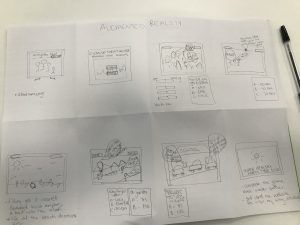DISCUSS AND DESCRIBE WHAT USERS CAN DO WITHYOUR PROTOTYPE
Users will be able to engage actively with a game component of a website. It will include improving the environmental problems in North Tyneside throughout the game. The player can only achieve this by answering the correct questions that either directly relate to North Tyne side or globally. The website will also have areas such a blog space. Where people can post thoughts about the community and areas of concern. These will be viewed by the youth council and can become a platform for many people to post thoughts. Additionally, there would be are of the website that includes all upcoming community events that engage the youth directly such as clean ups in the area including time, location etc.
Our main goal is to create a digital method that is educational and will create long term change in North Tyneside. With particular emphasis on schools and the learning program as the students are the next generation and have a platform to create change.
Long term goals can also include the possibility for the website to cover other issues potential planning and developments in the area that the council wants feedback on.
CONSIDER HOWYOU WILL CREATEYOUR PROTOTYPE
- Marvel
- Indesign/photoshop
- Invision

Hello team, thanks for the entry. It’s good to see you are re-stating what your digital concept entails (a game and a website). In the final reflective log, it would be helpful to have a bit further details of the key components / aspects that need prototyping (which ones to high level of detail and which ones to a lower level of detail). Also what’s the key user path / experience that you like to test in the prototype demonstration session? The answer to this will help you prioritise your effort. From the discussion in the seminar, I understand that the game takes priority, but you could have perhaps discussed this a bit further. The story board to the end of the blog entry is potentially useful and you try to relate it to a number of prototyping tools, but it misses that crucial further explanation as to what you aim to communicate here. Why where those tools choose? Lastly, perhaps it would be good to have a brief mention how you decided to divide prototyping tasks in the group. Were the guidelines on roles provided in the Sprint book (reading) useful or did you find an alternative arrangement that’s more useful to you?
I look forward to your next post on the making of the prototype. Onwards.